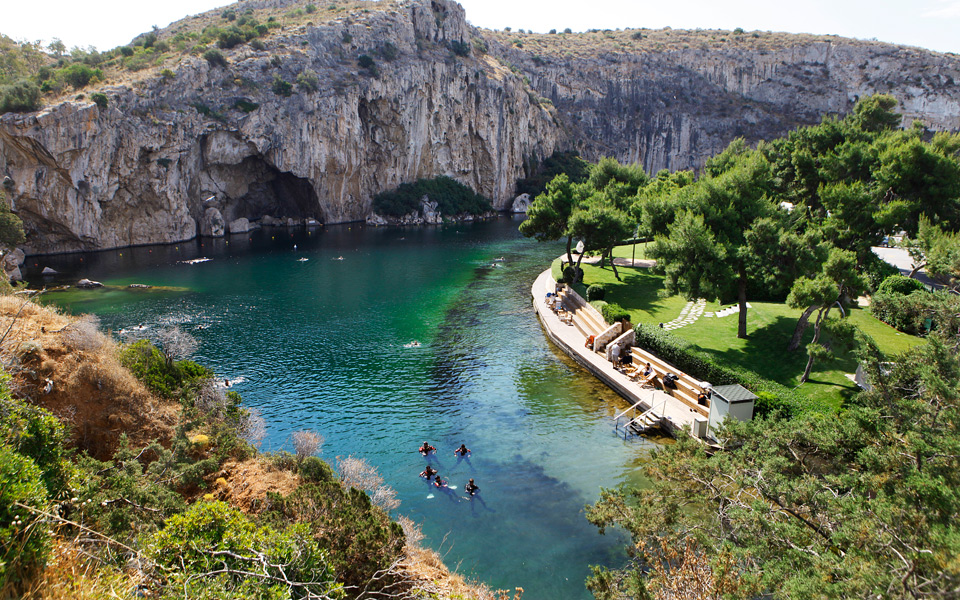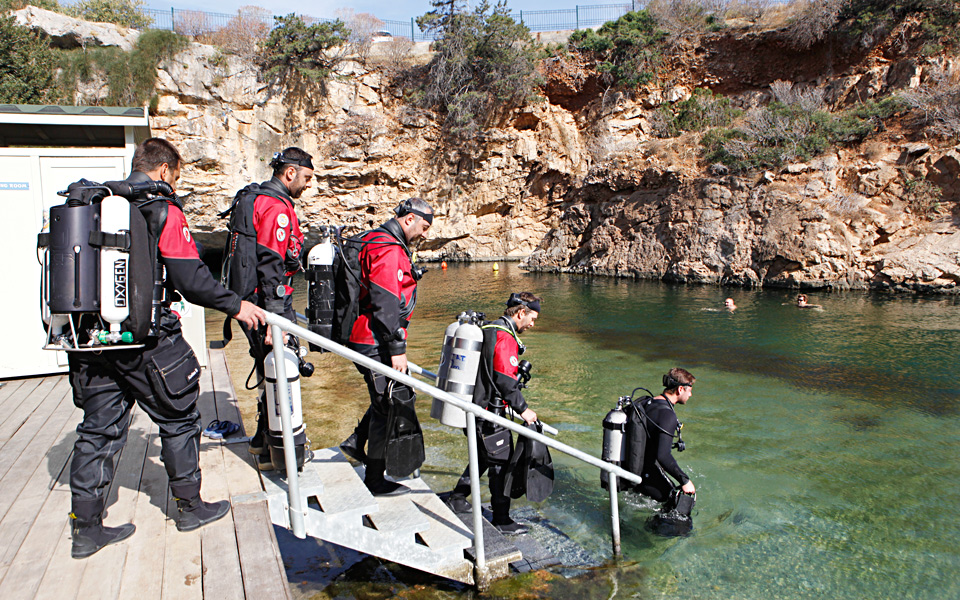In February, under the guidance of diving instructor Spyros Kollas, the 24-member InnerSpace Explorers Greece diving team – comprising mainly of his students from Greece, Switzerland, Sweden, Germany and Spain – started exploring the mysterious lake in Vouliagmeni. The aim was for them to experience how a proper diving expedition works, as well as to chart – for the first time ever – four small caves that lead into the lake’s legendary main cave further in.
For some three months, members of the team conducted dives in teams of up to six people – breaking off into pairs – and took measurements, photographs and videos while also collecting other data. They gathered early in the morning to get themselves and all their gear to Vouliagmeni and start the dives. Each dive lasted a maximum of 90 minutes – which was how long their oxygen and bodies could last – before packing everything up again and heading back home. It was an arduous and time-consuming task, but they had fun, learned a great deal and all got hooked on diving. Some team members with demanding jobs had to fit dives in around their busy schedules, while others had traveled from abroad, but all managed to overcome any kind of of obstacle in order to get back into the water.
The first phase of the project was completed at the end of August with the mapping of the first of four small caves. “It has a length of 70 meters from the entrance, a width of 30 meters, and a height, from top to bottom, of 40 meters, exceptionally clear waters and no stalagmites or stalactites. It is stunning,” says Kollas.
The team’s discoveries will not remain secret for long, as a recent partnership between InnerSpace Explorers Greece and the Dutch firm Reef Interactive, which specilizes in 3D imaging, has resulted in the first 3D interactive dive map app, which allows users to take a virtual dive into this particular part of Lake Vouliagmeni, receiving information such as the water’s temperature, depth, and the types of rocks located there.
“ In February, the 24-member InnerSpace Explorers Greece diving team set out to explore lake Vouliagmeni, and in specific four small caves that lead into the lake’s legendary main cave further in. ”

© Katerina Kampiti
The next phase of the operation, which consists of mapping the antechamber of the lake’s main cave, will start in early 2016.
Nikolas Margaritis, already excited by the first phase, has already said he wants to be part of the next mission. “Being part of the project combined the pleasure of recreational diving with active learning, and offered me an education in matters of the environment, charting, geology and in coordinating a team and managing resources,” he says. For Dimitris Dainavas, a nurse, it was the first time he had ever been cave diving and he had just one word to describe the experience: “awesome”.
Oddly enough, the word fear never comes up in our conversation, even though Kollas admits there are a lot of risks involved. “Cave diving is indeed dangerous because there’s a ceiling above you. You can’t come up for air – you need to swim out and then come up. There is also very little light. Moreover, when we’re mapping, we also have all the different machines for collecting data, ropes, tools, measuring tapes – these make it all the more complicated. It is an environment that can change in an instant. Anyone cave diving needs to be constantly alert and prepared,” he warns. “If you aren’t aware of all these factors, then you’re in danger.”
“Being part of the project combined the pleasure of recreational diving with active learning, and offered me an education in matters of the environment, charting, geology and in coordinating a team and managing resources,” says Nikolas Margaritis.

© Katerina Kampiti
The aim of the expedition is more than about discovering Lake Vouliagmeni. “Our aim is for the divers to combine enjoyment with giving back to society. We are happy to dive in the lake, but at the same time we are part of an operation that will lead to it being mapped for the first time. The maps will help people who want to visit it in future come properly prepared and be aware of what they’re facing. They will also attract dive tourists from other parts of the world. Foreign divers will know that they can enjoy a unique experience diving in this beautiful Greek lake.”











